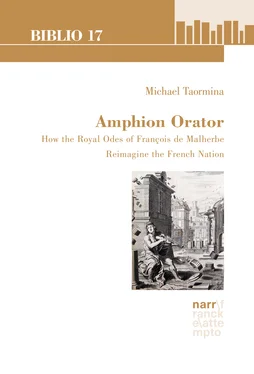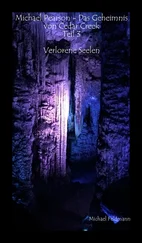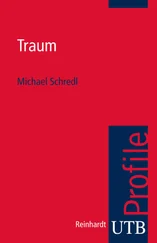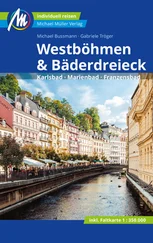Michael Taormina - Amphion Orator
Здесь есть возможность читать онлайн «Michael Taormina - Amphion Orator» — ознакомительный отрывок электронной книги совершенно бесплатно, а после прочтения отрывка купить полную версию. В некоторых случаях можно слушать аудио, скачать через торрент в формате fb2 и присутствует краткое содержание. Жанр: unrecognised, на английском языке. Описание произведения, (предисловие) а так же отзывы посетителей доступны на портале библиотеки ЛибКат.
- Название:Amphion Orator
- Автор:
- Жанр:
- Год:неизвестен
- ISBN:нет данных
- Рейтинг книги:4 / 5. Голосов: 1
-
Избранное:Добавить в избранное
- Отзывы:
-
Ваша оценка:
- 80
- 1
- 2
- 3
- 4
- 5
Amphion Orator: краткое содержание, описание и аннотация
Предлагаем к чтению аннотацию, описание, краткое содержание или предисловие (зависит от того, что написал сам автор книги «Amphion Orator»). Если вы не нашли необходимую информацию о книге — напишите в комментариях, мы постараемся отыскать её.
Amphion Orator — читать онлайн ознакомительный отрывок
Ниже представлен текст книги, разбитый по страницам. Система сохранения места последней прочитанной страницы, позволяет с удобством читать онлайн бесплатно книгу «Amphion Orator», без необходимости каждый раз заново искать на чём Вы остановились. Поставьте закладку, и сможете в любой момент перейти на страницу, на которой закончили чтение.
Интервал:
Закладка:
Part II, “The Sequence of Royal Odes,” the heart of the book, demonstrates the underlying unity of the corpus by performing a close reading of each ode from start to finish and in chronological order:
À la Reine sur sa bienvenue en France (1600; 1601);
Prière pour le Roi allant en Limousin (1605; 1607);
Ode sur l’attentat commis en la personne de sa majesté (1605; 1606);
Ode au feu Roi sur l’heureux succès du voyage de Sedan (1606; 1607);
À Monseigneur le duc de BellegardeBellegarde, Roger de Saint-Lary de Termes, seigneur de (1608; 1609);
Sur la mort de Henri le Grand (1610; 1630);
À la Reine sur les heureux succès de sa régence (1610; 1611);
À la Reine mère du roi pendant sa régence (1613; 1621);
Pour la Reine mère du roi pendant sa régence (unfinished 1613; 1630);
Pour le Roi allant châtier la rébellion des Rochelois (1627; 1635).31
The number of odes examined here expands the corpus studied by David Lee RubinRubin, David Lee from seven to ten, adding the shorter Horatian odes “Sur la mort de Henri le Grand” and “À la Reine mère du roi pendant sa régence” as well as the long fragment “Pour la Reine mère du roi pendant sa régence.” The expansion is justified by the intertextual motifs woven throughout the sequence, that is to say, the image of the ship of stateship of state and/or images of flood and storm, which lead an attentive reader to infer the overarching mythological questhero cyclequest. Such active participation is a figure of thought known as emphasis figures of thoughtemphasis or significatio figures of thoughtsignificatio (Quintilian 8.3.83; 9.2.64; Rhet. ad Heren CiceroRhetorica ad Herennium. 4.53.67 ff.), and it is how a reader would have become implicated in the political adventurehero cycleadventure and would have undergone the desired cognitive and affective modifications, that is, the movement from a partisan point of view to a collective national sentimentnationnational sentiment. This second half of the book therefore closely examines the argument and style of each ode, showing how the themes, imagery, and exampleexamples of each are fitted to the particular historical occasion as well as to the sequence’s overarching mythological pattern. Ethosethos, virtuevirtue, and the resources of elocutio styleelocutio remain the guiding principles by which to explore these multiple connections.
With Malherbe’s royal odes placed in their proper historical context, meaningful intentions emerge from their stylistic choices. Such intentions have less to do with what Malherbe meant to say than with what he did say and what that implies when considered against the political, social, and rhetorical backdrop. Every poem, every metaphormetaphor, is treated as an intentional object, that is, something purposefully constructed. This approach respects the Aristotelian distinction between actions and products and leaves the poet’s psychological intentions in the realm of speculation. It treats the stylistic choices evident in the text as decisions whose meaning and implication become plain once they have been set in their original context. The resonances of Malherbe’s odes with the pamphlet propaganda of the Wars of ReligionWars of Religion, generously cited in Myriam YardeniYardeni, Myriam’s La Conscience nationale en France pendant les guerres de religion (1559-1598) , were especially illuminating. Malherbe’s decision to compose odes in the grandstylegrand style, rather than prose pamphlets, on behalf of his Bourbon patrons, most likely had to do with the alleged permanence and universal appeal of poetry. The immortality and universality which the royal odes claim for themselves are recruited to serve the greater goodgreater good of the monarchy and the nationnation.
That said, the revelation of the hero cyclehero cycle—an ahistorical structure—came as a complete surprise. David Lee RubinRubin, David Lee must be credited with first seeing that the mythological themes informing Malherbe’s first ode to Marie de Médicis could be extended to the entire series. When I began to follow up RubinRubin, David Lee’s leads, however, looking closely at the odes’ mythological exampleexamples and images, and tracking down their textual sources, it dawned on me that the odes as a whole formed a unified sequence, and that, although RubinRubin, David Lee did not do so, an underlying mythological pattern for the whole sequencemythologymythological pattern could be found. My attention to the odes’ rhetorical strategies and tactics suddenly broadened to include the story they were trying to tell. That story had a hero, and the hero was engaged in a questhero cyclequest. But the sequence told it indirectly, through allusion from multiple sources, giving only bits and pieces in any single ode. Joseph CampbellCampbell, Joseph’s hero cyclehero cycle from The Hero with a Thousand Faces suggested itself because any particular story, or myth, does not have to include every stage of the cycle for the whole to be implied, and most important, every particular hero-story is a variation on the general pattern, so that the diversity of mythological exampleexamples and images presented in Malherbe’s odes could remain united in the motif of the questhero cyclequest. The underlying presence of the pattern means, too, that the incongruous details of any myth may be discounted. While my choice to use CampbellCampbell, Joseph’s hero cyclehero cycle to interpret the overarching story of the sequence may raise objections in some quarters, the ubiquity of the ship of stateship of state and storm/flood imagery as the mythological motif unifying all the odes is undeniable once the reader has been alerted to it. CampbellCampbell, Joseph would argue that the monomyth of the hero’s adventurehero cycleadventure has such deep roots in the human psyche, as attested by the psychoanalytic interpretation of dreams, that Malherbe need not have consciously incorporated it into the odes.32 Alternatively, Malherbe’s recourse to heroic myth may have simply unlocked a potential unity that the poet was able to keep exploiting and deepening over the years. I see no reason to choose between these alternatives.
I would just add that Malherbe’s use of an image—metaphormetaphor, exampleexample, comparisoncomparison, metonymycomparison, analogyproofanalogy, etc.—to suggest more than is being stated ( emphasis figures of thoughtemphasis, QuintilianQuintilian 8.3.83), sending an erudite and diligent reader to a classical or biblical intertext where an illuminating story is being told, recalls the contemporary practice of Jesuit books of spirituality which used a mystical version of peinture [vivid description] to unlock the veiled meaning of engraved images that referred back to passages in the Bible.33 This similarity of intertextual reading practices suggests that Malherbe could have invested his odes’ rhetorical images with spiritual meaning, and that the royal odes contain a deeper or hidden message which may be accessed only by reflection, provided the intertext has been dug up. If such a reading is plausible, and I don’t see why it is not, then the presence of Joseph CampbellCampbell, Joseph’s hero cyclehero cycle in the odes looks much less ahistorical.
What does seem clear in retrospect is that Malherbe’s contemporaries, when reflecting on the poetic achievement of the odes, could not see the forest for the trees. The relatively uneducated members of the royal courtroyal court, which constituted Malherbe’s captive audience, could hardly have been expected to pick up on such veiled allusions, while rivalry and caste loyalty probably blocked the royal odes’ reception among the more erudite members of the Church and the Parlement Parlement. Malherbe was after all contesting their self-appointed magistracy of royaleloquenceroyal eloquenceeloquence. The myopic reading of the odes by erudite belle-lettrists like Chapelain, Godeau, or Guez de Balzac was perhaps the fault, at least in part, of Malherbe himself. His infamous critique of Ronsard, his rude snubbing of Desportes, and his exclusive poetry atelier (where his epigones gathered to discuss the mechanics of verse) fit two ready-made narratives: the petulant modern rejecting the humanist legacy, and the grammarian demanding clarity, logic, and coherence at the expense of inspiration. My aim in refocusing the lens on the royal odes is to widen and to deepen the reader’s gaze in such a way as to recover the big picture while not losing sight of tactics and tools. The approach I have taken, however, has little to say about the actual reception of the royal odes. That would have required writing an altogether different book.34
Читать дальшеИнтервал:
Закладка:
Похожие книги на «Amphion Orator»
Представляем Вашему вниманию похожие книги на «Amphion Orator» списком для выбора. Мы отобрали схожую по названию и смыслу литературу в надежде предоставить читателям больше вариантов отыскать новые, интересные, ещё непрочитанные произведения.
Обсуждение, отзывы о книге «Amphion Orator» и просто собственные мнения читателей. Оставьте ваши комментарии, напишите, что Вы думаете о произведении, его смысле или главных героях. Укажите что конкретно понравилось, а что нет, и почему Вы так считаете.












